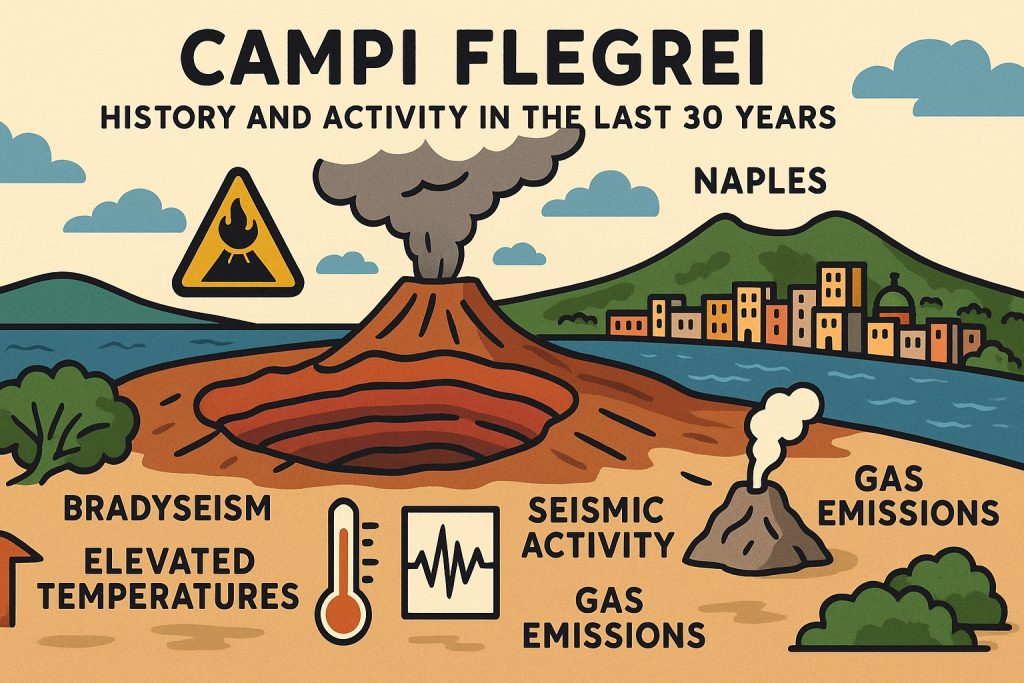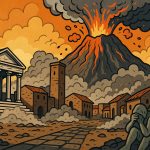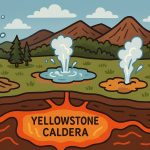The Campi Flegrei (Phlegraean Fields) is one of the most dangerous and least understood volcanoes in the world. Unlike iconic cone-shaped peaks like Mount Vesuvius, Campi Flegrei is a supervolcano caldera — a massive, sunken volcanic complex lying mostly beneath the surface. Located just west of Naples, Italy, it spans 13 kilometers across and includes several craters, hot springs, and fumaroles scattered throughout populated neighborhoods.
Campi Flegrei has a long and violent history, with its most powerful eruption — the Ignimbrite Campana eruption — occurring around 39,000 years ago. That explosion affected the global climate and may have contributed to the decline of Neanderthals in Europe. Another major eruption occurred around 15,000 years ago, forming much of the present-day landscape.
Activity in the Last 30 Years
While Campi Flegrei has not erupted in modern times, it has shown clear signs of unrest — especially in the past three decades. These signs include:
- Bradyseism: A phenomenon where the ground rises or sinks due to underground magma movement. The town of Pozzuoli, built within the caldera, has risen over 90 cm since the 1990s.
- Seismic activity: Small to moderate earthquakes have become more frequent, especially since 2005, with tremors sometimes occurring daily.
- Gas emissions: Carbon dioxide and sulfur gases have increased at fumarole sites like Solfatara Crater, suggesting changes in magma pressure.
- Elevated temperatures: The ground and water temperatures in parts of the caldera have risen, indicating subterranean heat flow.
Italian authorities raised the volcano’s alert level to “yellow” (monitoring and preparation) in 2012 — a status it still maintains. Scientists are closely observing every change to anticipate whether the signs of unrest could lead to an eruption.
The 2023–2024 Swarm
In 2023–2024, the Campi Flegrei caldera experienced its strongest seismic swarm in decades. Hundreds of micro-earthquakes occurred in just a few weeks, with some exceeding magnitude 4.0 — enough to damage buildings and cause panic in local communities. These swarms were accompanied by further ground uplift and gas emission increases.
While no eruption followed, the swarm intensified public concern and led to the updating of emergency evacuation plans for tens of thousands of residents living inside the caldera.
How Dangerous Is It?
If Campi Flegrei were to erupt, the consequences could be catastrophic. Even a small eruption could disrupt life in Naples and force mass evacuations. A large eruption could send ash clouds across Europe, release toxic gases, and trigger global climate effects.
Fortunately, eruptions from supervolcanoes are extremely rare. The challenge is distinguishing between normal geothermal activity and the early signs of a major event. This is why Campi Flegrei is under constant satellite and ground-based monitoring by the Italian National Institute of Geophysics and Volcanology (INGV).
Sooner or later, a supervolcano eruption will happen, and the sooner we’re ready for it, the better.
Glossary
- Caldera – A large, basin-like depression formed when a volcano collapses after an eruption.
- Bradyseism – The gradual uplift or subsidence of the Earth’s surface caused by underground volcanic activity.
- Fumarole – An opening in the Earth’s crust emitting steam and volcanic gases.
- Supervolcano – A volcano capable of producing eruptions thousands of times more powerful than normal eruptions.
- Seismic swarm – A series of earthquakes occurring in a localized area over a short time.


